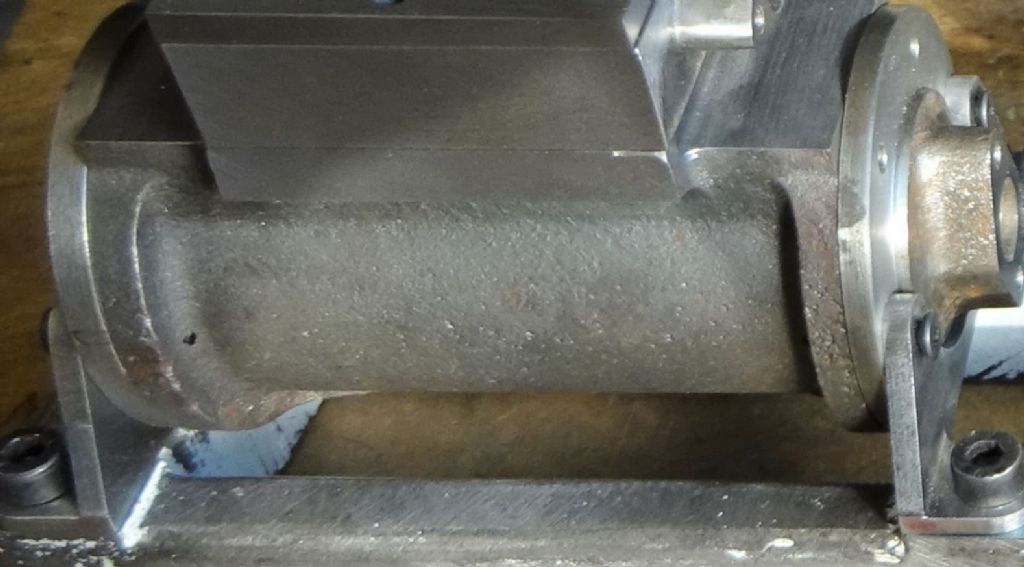Posted by JasonB on 30/06/2021 13:10:06:
The plugs are usually put in without a ctr dimple and then you mark out the position based on the casting rather than what it looks like you have done which is ctr them first and drive into core. Often cores are out by a lot so should never be trusted as being true.
Bit more JBW on the flats would sort them out or bond on a bit of ali/brass to bring them up higher.
Yes, I’ll re-check the plugs, although I think 2 or 3 of them are pretty much spot-on the centre of the arcs I scribed on after with the callipers. Might use aluminium discs instead as I think you also suggested.
Set both beds up aligned to the mill base:

Checked for height of the pads:

Then bolted the feet on:

And placed the cylinders on the feet, with the valve faces clamped nominally flat with a parallel:

Idea is to use the mill as a primitive CMM, to check the positions of the cylinder centres and valve faces (edges and top faces) before bonding & bolting to the feet.
A quick visual check with a pointer indicated everything was OK. I’ll do some more accurate checks tomorrow on the valve faces, then get the JB Weld out again. I think with the enlarged foot holes and final machining of everything to the finished bores, I’ll have more than enough wiggle room to get everything perfect when it’s eventually assembled (which seems a very long way in the future at the moment).
 JasonB.
JasonB.























